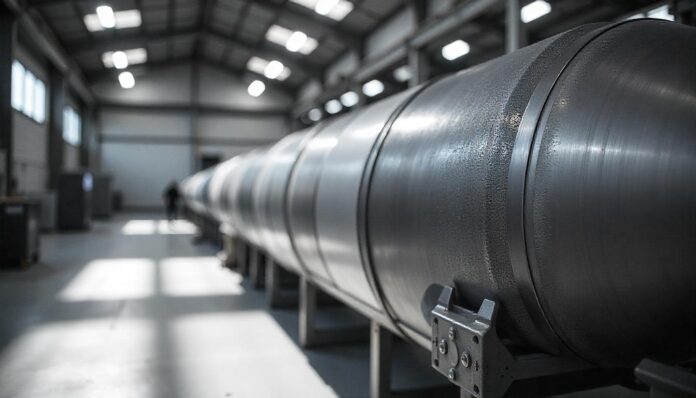Sustainability isn’t always loud. Sometimes it hums quietly inside a factory, disguised as a well-calibrated powder coating oven. While some focus on flashy green campaigns, the real change often comes from machines doing the work day in and day out—especially those used in finishing systems. A powder coating machine, built for performance and efficiency, brings more to the table than just a clean finish.
Powder Reclamation’s Quiet Influence on Material Conservation
Behind every sleek-coated part lies a less obvious hero: reclaimed powder. A modern powder coating machine is designed to capture and reuse excess powder, turning what would be waste into usable material. This not only reduces consumption but keeps costs low for manufacturers working at scale. In traditional paint setups, overspray usually ends up in the trash. With a reclaim system, nearly every particle counts.
What’s clever about powder reclamation isn’t just how it saves material—it’s how it does so without compromising finish quality. Technicians can maintain consistent thickness and coverage, even with reused powder, which means conservation doesn’t come at the expense of performance. That balance between efficiency and consistency makes these machines a quiet but vital tool for any operation aiming to meet long-term sustainability targets.
Energy Efficiency Gains Through Improved Heat Retention
A key piece of the puzzle lies in the oven—the heart of a powder coating machine. Today’s units are designed with advanced insulation and efficient airflow, helping them heat faster and retain that heat longer. This design slashes energy demands during every cycle, especially in high-throughput operations. The result? Lower utility bills and a smaller carbon footprint without any slowdown on the production floor.
The brilliance of heat-efficient ovens is that they don’t need bells and whistles to prove their worth. They just work smarter. This efficiency helps manufacturers reduce their reliance on energy-intensive systems and align better with evolving environmental standards. As the pressure to shrink energy usage grows, this feature becomes less of a bonus and more of a necessity.
Solvent-Free Processes Amplifying Air Quality Improvements
Working with solvent-based coatings means dealing with fumes, ventilation headaches, and air quality concerns. Powder coating machines skip all of that. Because the process is dry and doesn’t rely on harsh chemicals, indoor air stays cleaner—and safer—for workers. This benefit doesn’t make headlines, but in shops where airflow and safety go hand in hand, it makes a big difference.
The ripple effect extends beyond the shop floor. Local communities benefit too. Fewer emissions mean less environmental drift, cleaner surroundings, and fewer risks to nearby ecosystems. As manufacturing regulations tighten, having a solvent-free system in place helps businesses stay ahead of the curve without sacrificing throughput or quality.
Lifecycle Durability Reducing Overall Environmental Footprints
Longevity matters. A finish applied through a powder coating machine typically outlasts those from traditional liquid methods. That durability means fewer repaints, fewer replacements, and fewer resources consumed in the long haul. Whether it’s industrial equipment or consumer goods, extended product life is one of the easiest ways to reduce environmental impact.
From a production perspective, fewer touch-ups also reduce labor hours, material use, and overall operational strain. It’s a low-maintenance win. By using machines that create tougher coatings, companies not only deliver better products—they also cut down on unnecessary cycles of consumption. That long-term mindset aligns well with global sustainability goals.
Lower VOC Emissions Boosting Facility Compliance Efforts
Volatile organic compounds—better known as VOCs—are one of the top concerns for any operation that wants to keep its environmental footprint in check. Powder coating machines eliminate most VOCs from the start. This gives facilities an easier path to compliance with air quality regulations and environmental certifications.
The lack of VOCs also opens up the door to leaner processes. Ventilation systems don’t have to work as hard, and operators don’t need to gear up with respirators or full protective suits for every shift. This shift not only simplifies safety procedures but also reduces long-term equipment costs for compliance and monitoring.
Waste Minimization Enabled by Intelligent Powder Application
Modern machines come with smart features—adjustable spray patterns, targeted application, and programmable settings—that minimize waste with precision. By reducing overspray and increasing coverage efficiency, each batch of powder stretches further. A little fine-tuning goes a long way toward reducing material loss and keeping production lines greener.
These improvements don’t require complex changes to workflow either. With intuitive controls, operators can manage output with ease, whether they’re running a batch of small parts or a large industrial component. This flexibility ensures that sustainability doesn’t slow down productivity—in fact, it often enhances it.
Environmental Stewardship Enhanced by Consistent Coating Efficiency
Consistency isn’t just about appearance; it’s also about responsibility. A powder coating machine that delivers uniform finishes on every cycle helps reduce the need for reworks, which in turn reduces waste. This kind of performance builds trust in the process and cuts down on energy, powder, and labor used for corrections.
Efficient machines also support better inventory control. Less variability in output means fewer backup parts, fewer do-overs, and a smoother supply chain. That streamlined flow supports sustainability on multiple levels—less clutter in warehouses, fewer shipping delays, and better resource use across the board. In this way, powder coating machines quietly reinforce environmental values with every pass.


